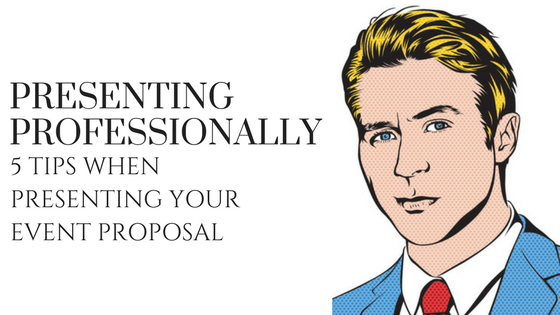A lot of things happen behind the scenes of an event. Largely the months of planning and preparation that occur for that one night or several days event.
When individuals think about becoming an event planner, they often picture themselves enjoying time with the client picking out color swatches or even mingling while the party takes place. While these are some perks to being an event planner, there is a lot of hard work that goes into pulling off a successful party or event.
Before you can even get started planning an event, you must be selected as the planner of choice. Sometimes that means competing against other planners. The “competition process” can include presenting your proposal to the potential client, which is the topic we will be addressing here. This process might be called the RFP (Request for Proposal) process and many times the client will give you an outline of what they are looking for.
If you have made it this far in the selection process, there are some tips you’ll want to follow to make sure you are presenting in a professional manner and are able to make the most of this important face-to-face time with the client.
Below are five tips to presenting your event proposal professionally:
 1) Dress to Impress
1) Dress to Impress
Don’t show up in yoga pants and your favorite black t-shirt. Although you may wear that in your home office, it’s not what you should wear for your presentation.
If this is your first face-to-face meeting with the client, you’ll want to use your attire to make a good first impression. I’d suggest wearing dress slacks and a business formal top or even a pencil skirt and dress sweater. Think of what you’d wear to an interview and go from there.
As you narrow down your outfit options, make sure you eliminate any options that could be too distracting. You don’t want the client focused on the clang of your bangle bracelets or brightly patterned tie.
2) Use Professional Body Language
While you are presenting, make sure your body language is positive and professional. Don’t slouch, grimace, or look closed off by crossing your arms the entire time.

It is important that you stand up straight, use open body language, and avoid doing any nervous tick behaviors if possible. Things like swaying and tapping your foot can be distracting and take away from the presentation. Ask your close friends, coworkers, or family members if you have any nervous habits you need to work on.
3) Practice Beforehand
If this is your first rodeo or a big presentation you’re feeling nervous about, practices in front of a small crowd or even the mirror beforehand. This is a great way to become aware of body language errors we previously mentioned. It is also a chance to refine your message and time your presentation.
4) Bring along a team member

I always like to have someone with me when I go to present a proposal. Not only does it allow someone to watch the clients’ reactions to ideas I’m presenting more closely, but it allows someone else within our company to be knowledgeable on the event details. This can be important for emergency situations. If you were unable to complete the event planning or be there the day of the event, your associate can seamlessly take over.
Another benefit is their ability to take notes for later and alert you if the client gives any non-verbal cues about disliking an idea or catch little nuances that you might have missed.
5)Practice your redirection skills
When your teammate gives you a silent cue of the client not liking an idea, or if you are able to notice it yourself, make sure you are able to redirect your client to the ideas they did like. This can be tough but with practice and more events, it will come naturally.
When presenting by yourself, watch the facial reactions to your ideas. If something isn’t clicking for the person you are presenting to, turn the meeting around and start asking questions. If you listen closely, the potential client will tell you exactly what they want and how much they are willing to spend.
Presenting your proposal professionally is an important step in getting selected as the planner of choice for an event. Going in with a negative attitude or making the mistake of chewing gum while presenting are things that can make or break your business. You may not get future calls to present if they feel you don’t take your job seriously.
There are also fun ways to spice up your presentation and leave an impression, which I share in full detail in our event planning membership.
I’d love to hear what you do to prepare for presentations. Share in the comments below!
Tracy Fuller-White has owned and operated an event production company for 30+ years and has done events nationally and internationally for fortune 100 and fortune 500 companies.










